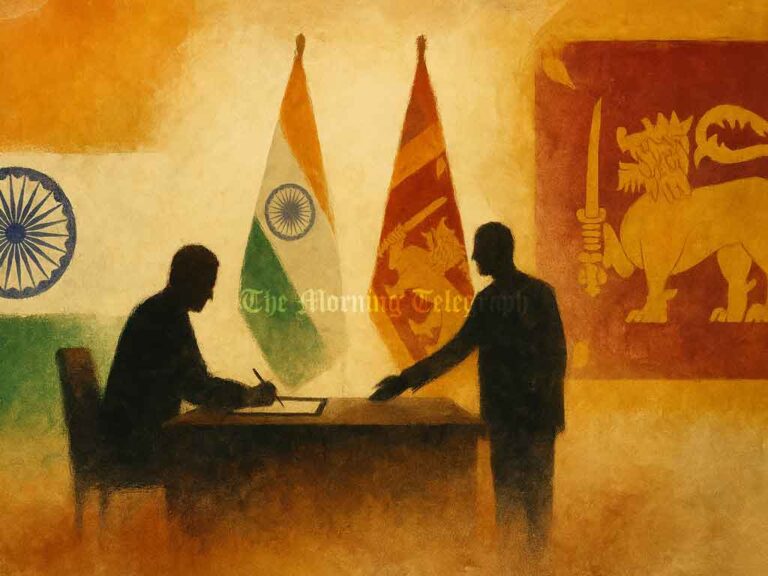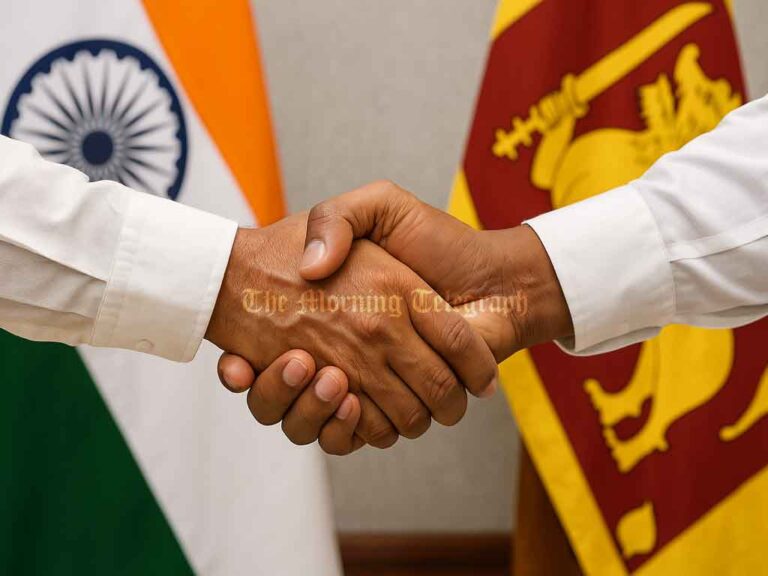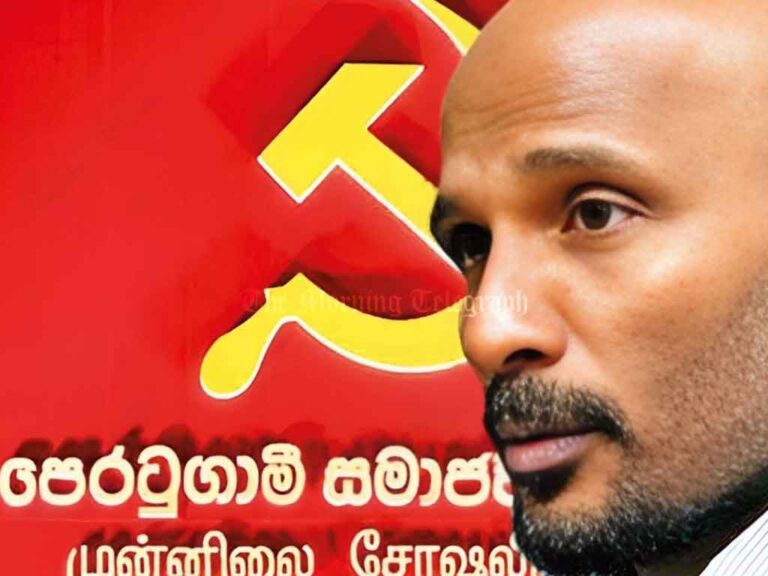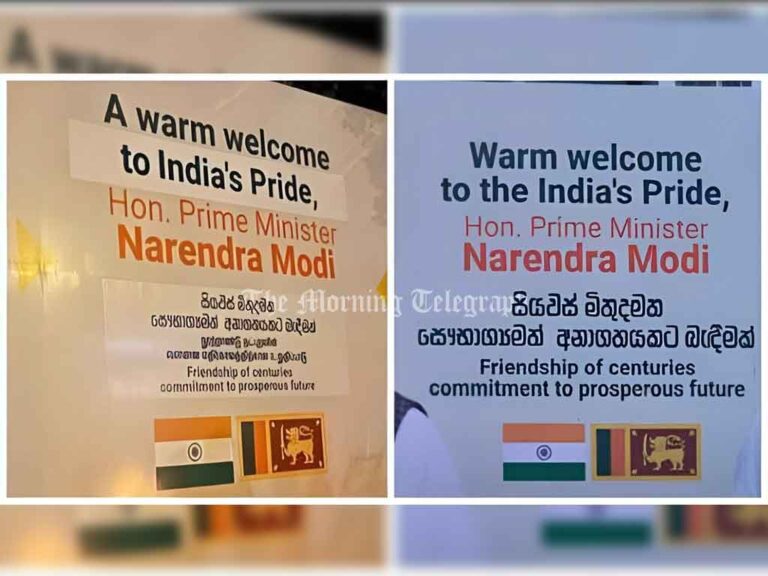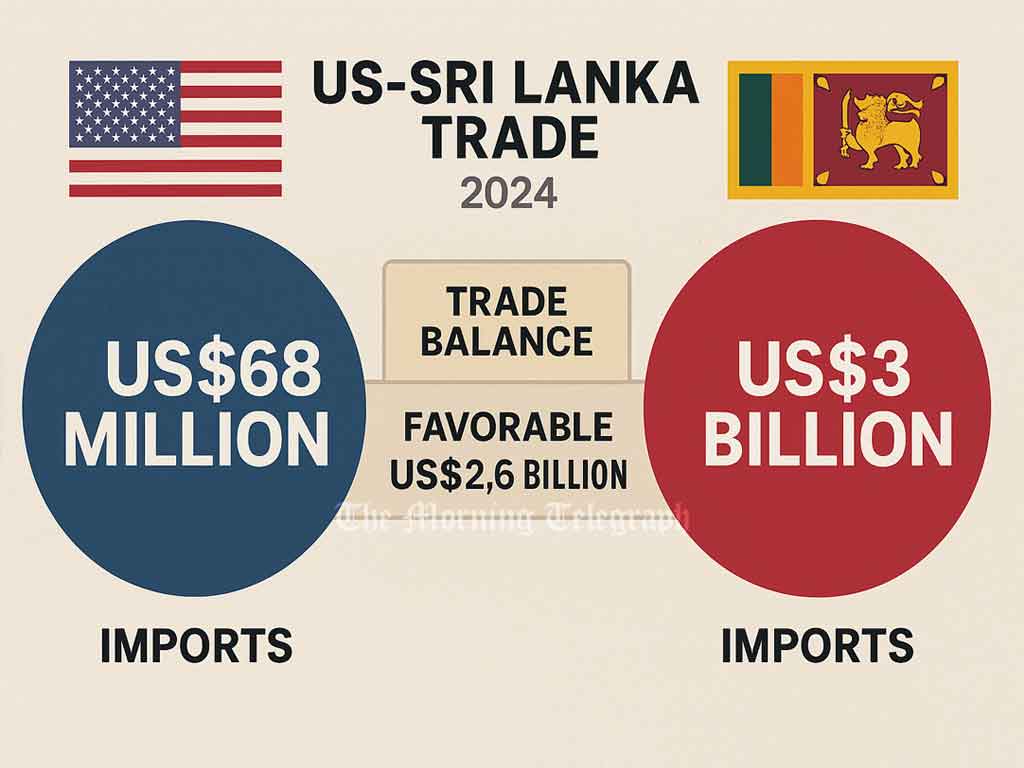
Colombo, Sri Lanka – In what analysts are calling a major diplomatic and economic blunder, Sri Lanka has found itself among the countries hardest hit by a new wave of U.S. tariffs announced under President Donald Trump’s second term in office. The United States has imposed a 44% tariff on a wide range of Sri Lankan exports, a move that experts say could have been avoided through earlier and more strategic diplomatic engagement.
The Trump administration, in line with its “America First” economic policy, announced in March that it would impose reciprocal tariffs on nations perceived to be exploiting trade imbalances with the United States. Within days of his swearing-in, President Trump imposed tariffs on China, Mexico, and Canada, sending a clear message that even long-standing political allies would not be exempt from economically driven retaliation.
This policy is a stark departure from past U.S. administrations, which often used trade tariffs for political leverage. Trump’s approach is purely economic, aiming to correct what he claims are decades of unfair trade practices that have disadvantaged the U.S.
“For years, America has exported goods to countries that impose high tariffs on our products, while we allow their goods into our markets with minimal tariffs,” President Trump said during a March press conference. “We’re simply leveling the playing field.”
Among the countries he identified as targets for upcoming tariff hikes was India—a key trading partner in South Asia. Experts argue that this was a clear signal to other regional economies like Sri Lanka that they could be next.
Sri Lanka’s Missed Signals and Inaction
Despite the public warning and the inclusion of a neighboring country like India, Sri Lanka failed to anticipate the threat and take action. No urgent diplomatic outreach was made. In contrast, India reacted immediately, with Commerce Minister Piyush Goyal suspending all domestic duties to travel to Washington and negotiate tariff terms. India managed to limit its tariff exposure to approximately 26%, down from the 50% initially proposed.
Sri Lanka, on the other hand, took no proactive steps. Worse, the government increased tariffs on automobiles, including those imported from the United States, during the same period—a decision that likely fueled Washington’s decision to hit Sri Lanka with the maximum penalty.
“If India is being targeted, Sri Lanka is certainly on the list. It didn’t take a diplomat to see this coming,” noted one foreign policy analyst. “Our failure to act was more than negligence—it was a complete misreading of global economic signals.”
A Blow to the Economy
Sri Lanka’s trade relationship with the U.S. is crucial. In 2024, bilateral trade amounted to approximately US$ 3.4 billion. Of this, only US$ 368 million accounted for U.S. exports to Sri Lanka—mainly automobiles, auto parts, and wheat flour. The remaining US$ 3 billion consisted of Sri Lankan exports, particularly garments, gloves, rubber goods, gems, and precious minerals.
With Sri Lanka already struggling with foreign exchange shortages, losing its largest export market is a devastating setback. The new tariffs have wiped out many of the benefits enjoyed under the Generalized System of Preferences (GSP), making over 3,000 Sri Lankan goods suddenly less competitive in the U.S. market.
“Every major clothing brand in the U.S. relies on Sri Lankan manufacturers,” said a senior garment industry executive. “Now, due to these tariffs, we’re likely to lose contracts to Bangladesh or India overnight.”
The garment sector, which employs hundreds of thousands of Sri Lankans, is bracing for job losses. Meanwhile, the gem and jewelry industry, another key export sector, faces similar uncertainty. With US$ 3 billion in exports at stake, Sri Lanka now risks sliding back into a severe balance-of-payments crisis.
A Delayed and Inadequate Response
Despite the early warnings and the clear consequences of inaction, the Sri Lankan government only responded after the damage was done, appointing a committee to study the tariffs and make recommendations.
Critics argue that this move is too little, too late. The U.S. decision, announced a month in advance, was implemented on schedule—yet Sri Lanka failed to initiate any meaningful dialogue with U.S. officials.
“We wasted a full month. Our officials were busy discussing topics like democracy and sexual orientation with the U.S. ambassador instead of focusing on looming trade threats,” said a political commentator. “This is not a case of repression—it’s sheer incompetence.”
Many believe that a simple reduction in import tariffs on American goods, particularly vehicles and electronics, could have prevented the U.S. from targeting Sri Lanka. Unlike other governments, the Trump administration’s tariffs are not politically motivated but strictly reciprocal, designed to balance trade deficits.
“A single signature from the President could have prevented this. Instead, we made it worse by increasing tariffs on U.S. goods just weeks before the deadline,” the commentator added.
The Price of Delay
The economic damage Sri Lanka now faces is arguably greater than that suffered by any of the 25 countries affected by the new U.S. tariffs. While nations like India and Bangladesh acted quickly and limited their exposure, Sri Lanka’s exports will now be priced significantly higher in the U.S. market, putting its industries at a serious disadvantage.
Exporters are already reporting cancellations and order re-routing to competitors. Meanwhile, foreign investors are reassessing Sri Lanka’s reliability as a trade partner.
“This could have been avoided—or at least softened—if we had acted with urgency,” said an official from Sri Lanka’s Export Development Board. “We didn’t need diplomacy. We just needed common sense and speed.”
The tariff crisis has laid bare deep flaws in Sri Lanka’s diplomatic and economic decision-making machinery. While the U.S. acted decisively, and India responded strategically, Sri Lanka was caught flat-footed. The question now is not just how the government will recover from the blow—but whether it can afford any more such missteps as it navigates a fragile economic recovery.

